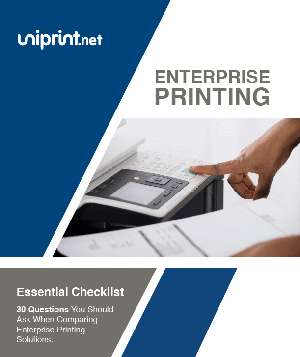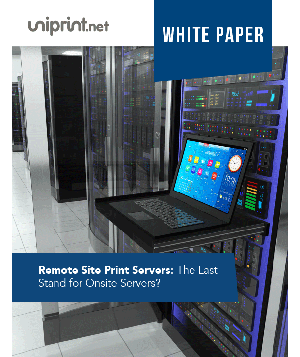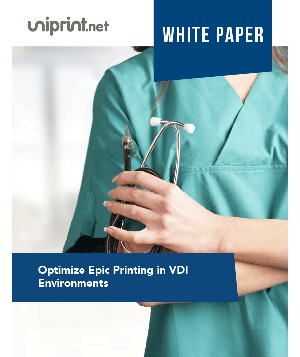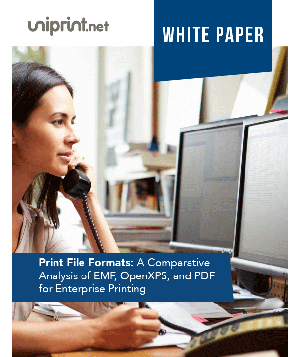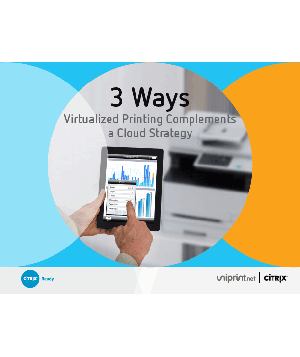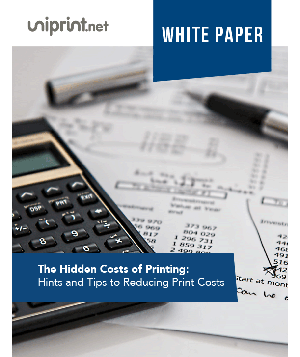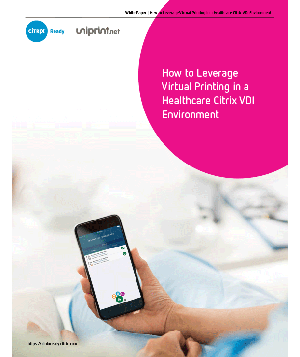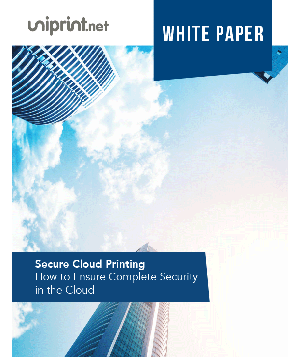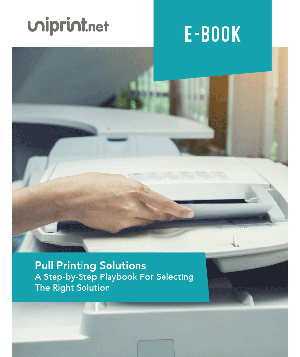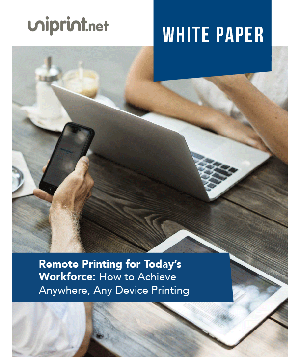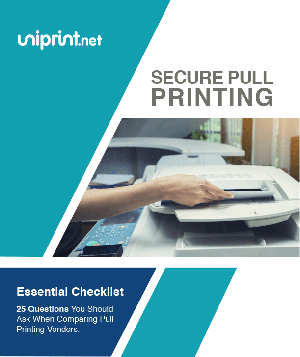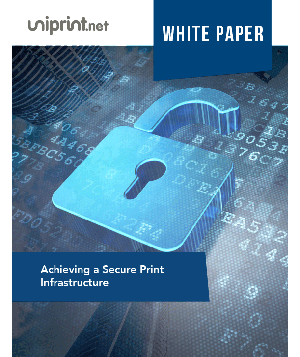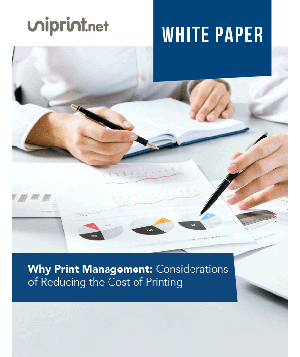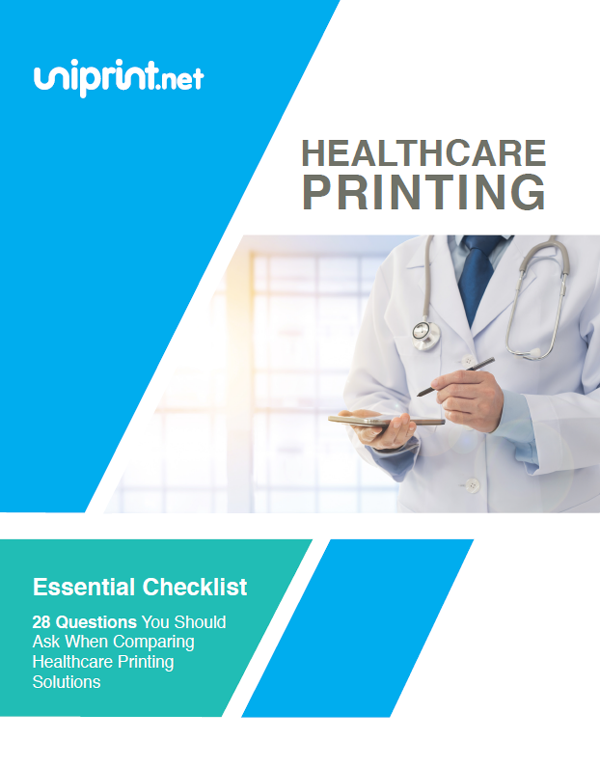The Real Cost of Enterprise Printing – Free Is Not Really Free
The Real Cost of Enterprise Printing
When purchasing software, organizations do so to boost efficiency, save time and reduce costs.
And like most organizations, you have limited IT staff, a modest budget and overflowing to-do lists; hence, the reason why desktop virtualization and centralized application delivery are so popular.
So when an organization purchases a solution such as Citrix XenApp/XenDesktop, VMWare Horizon and Windows Server, it is more disposed to using the built-in universal printer driver (UPD) that comes with it.
And why not?
These “freebies”, as we’ll call them, or built-in UPD printing solutions are free up front and may reduce acquisition costs, but can they reduce the cost of printing over the long term?
Total Cost of Ownership
These built-in UPD printing solutions typically offer a bare-bones offering with limited functionality.
And for some smaller, simpler print environments, it’s all you need.
However, for larger organizations or companies with more complex print infrastructures such as:
- the existence of multiple printer vendors,
- BYOD initiatives and
- mobile users working flexible hours and wanting to print from home
- costs on implementation
- costs on consultants
- costs on ongoing maintenance
- costs on support
Such costs can quickly add up to more than it would cost for a comprehensive solution. Therefore, the true cost of enterprise printing is the total cost of ownership (TCO), not just the licensing cost.
For example, beyond the basic printing functionality of UPD, let’s examine manual printer assignment versus automated printer mapping.
This translates into time spent configuring and maintaining a built-in solution by professional IT personnel.
There are a couple of ways an administrator can assign printers to users.
One way is to create a logon script and then assign it to users through Active Directory or configured through Group Policy.
Depending on how large the company is, this could result in a lot of scripting and assigning.
The other option is to go to each and every individual computer and add printers through the Control Panel, which is not very practical for large companies.
Conversely, with an automated tool like UniPrint PrintPAL, printer mapping is as easy as “click, drag, and release”, saving valuable administrative time.
Time & Cost to Resolve a Problem
When problems do occur, how much time is spent on support?
When you call your software vendor, do you get someone answering the phone right away, or do you have to leave a message and wait 24 hours before a support person calls you back?
How much are you losing in time and productivity, when you’re unable to print and are waiting for support to call you back?
Does support know what they are doing? They’re responsible for supporting a product that isn’t necessarily only for printing.
Sure printing is a part of it, but only a very small part of it. These software vendors are not in the business of solving printing issues. It is not their core business.
So getting competent support on printing right away may not be possible.
The true cost of printing downtime, especially unexpected downtime, is variable and unique to each company (even companies in the same industry).
It also depends on how important printing is to your company.
Is it mission-critical or merely an inconvenience?
But losses in the areas of labor, revenue, and service all contribute to the cost of printing downtime.
The following simplified equation from North American Systems International can be used to calculate the labor cost for mission-critical printing outages:
Labor cost = (# of employees) x (average employee cost per hour) x (duration of the outage in hours)
So for 2,000 employees at about $50/hour for an outage of 4 hours, the labor cost would be $400,000.
Of course, one can argue that while printing is not available, employees are not idling and doing nothing. The fact of the matter is that there is a cost associated with any downtime, even for a few minutes.
Interested in finding out more about print management and print-related costs? Check out this free whitepaper on the hidden costs of printing!
Paper Waste and Security Breaches
Some UPD printing solutions such as UniPrint Infinity also offer ways to support corporate environmental initiatives and comply with corporate information security regulations.
Going “green” is not only good for the environment and our children’s future, it could also put “green” back into corporate coffers.
Reducing your carbon footprint can be accomplished by implementing printer policies that reduce the amount of paper and ink/toner consumption and then enforcing these policies by making them defaults in your environment.
With UniPrint Infinity, a default printer profile can be created that forces users to utilize double-sided printing and reduced resolution.
By printing double-sided, paper savings could be as much as 50% depending on the types of documents and the number of pages printed.
On average, 20% of all printing is uncollected or misprinted, which equates to paper waste is one of the largest contributors to office wastage and also liable to cause security breaches.
Secure Pull Printing
This is where secure pull printing could be implemented. With secure pull printing, users are required to authenticate at the printer before their document is printed.
This changes user behavior and makes them conscious of their printing habits. Users click Print at their desks and their document isn’t printed until they are physically present at the printer to authenticate and collect it.
A secure pull printing solution, such as UniPrint SecurePrint, can reduce the number of uncollected printouts, which helps prevent document-related security breaches.
Security is on everyone’s mind these days.
Whether the concern is keeping corporate information confidential or protecting your organization from outsiders looking to do harm or exploit any vulnerability.
Improved security is another feature that the UPD “freebies” don’t do. They cannot help you secure your printing infrastructure by controlling access to certain printers, encrypting print data, or minimizing information breaches through pull printing.
While it is tempting to “save now and pay later”, it’s worthwhile to do your research upfront and test drive any printing solution, built-in and comprehensive, and calculate the full costs of the solutions available to you.
I think you’ll find that “free” often comes at a higher price in the long run.
Try UniPrint InfinityCloud
Whether you are printing at the office or at home, UniPrint InfinityCloud is the cloud printing solution of choice for your organization.
Recent Posts
- Why Traditional Printing No Longer Works In Your Office
- How to Streamline and Modernize Printing in Healthcare Environment
- When Print Management Becomes a Crisis: How to Act Fast
- 10 Ways Cloud Print Management Can Increase Security to Prevent Data Loss and Increase Productivity
- Serverless Printing 101: A Beginner’s Guide to Going Server-Free with Print
- Cloud Printing Management: The Secret to Fewer Help Desk Tickets
- Why Should You Outsource Printing Management? A Comprehensive Overview
- How Cloud Print Management Prevents Print Server Vulnerabilities
- Is Printing Dead?
- How InfinityCloud Outshines Microsoft Universal Print in 2024
- See All


